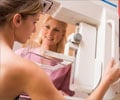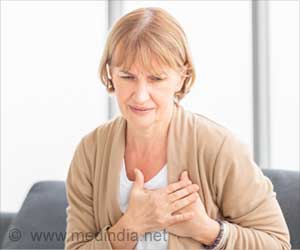Measuring a woman’s bone mineral density can provide additional information that may help more accurately determine a woman’s risk of developing breast cancer.
Measuring a woman’s bone mineral density can provide additional information that may help more accurately determine a woman’s risk of developing breast cancer. The study’s results suggest that incorporating bone mineral density tests with current risk assessments might significantly improve physicians’ ability to predict breast cancer risk in older, postmenopausal women.
Bone mineral density testing is done to diagnose osteoporosis and help assess the risk of fractures. Low bone mineral density is linked to higher risk of fractures, while normal density is linked to lower risk of fractures. It is possible that over a woman’s lifetime, hormonal and other factors that lead to higher bone mineral density can also lead to higher risk of breast cancer.Studies have found an association between higher bone mineral density and higher breast cancer risk, and bone mineral density tests have been proposed as a potential addition to breast cancer risk models. This study, supported by Eli Lilly & Company, is the first to investigate the relationships among bone mineral density, traditional breast cancer risk assessment tool results, and breast cancer incidence among the same group of postmenopausal women.
To investigate these relationships, Dr. Zhao Chen of the University of Arizona Mel and Enid Zuckerman College of Public Health and her colleagues studied approximately 10,000 post-menopausal women (average age 63) taking part in the Women’s Health Initiative, a study conducted in 40 clinical centers throughout the United States and supported by the National Heart, Lung and Blood Institute of the National Institutes of Health.
The researchers assessed the women’s initial bone mineral density level as well as their score on the Gail risk model, a well known and commonly used tool that estimates five year and lifetime risk of invasive breast cancer for women 35 years of age or older. They then followed the women for an average of approximately 8 years, noting which women developed breast cancer.
As expected, the study found that women with a high Gail score had a 35 percent increased risk of developing breast cancer compared to women with a lower Gail score. But the study also found a 25 percent increase in the risk of developing the disease with each unit increase in total hip bone mineral density t-score. While the two scores were independent of each other, women who had the highest scores on both assessments had a much higher risk in breast cancer.
The findings suggest that adding bone mineral density to currently used risk assessment tools may significantly improve the prediction of breast cancer risk.
Advertisement
This study also suggests that bone mineral density is a potential alternative for predicting breast cancer risk in postmenopausal women if Gail score is not available. Additional studies are needed to determine if the results from this investigation are applicable to a broader group of women, including minorities.
Advertisement
Source-Eurekalert
KAR














